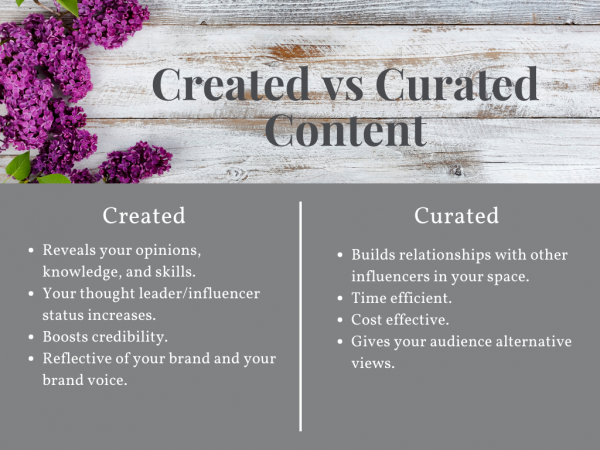For years, there’s been an ongoing debate about whether it’s better to continually create your own content or if it’s best to share someone else’s thoughts and ideas (considered the lazy way by some) when it comes to digital marketing.
To be clear, the definition of content creation is the process of researching and writing your own content from scratch. On the other hand, content curation is the process of gathering existing information written by others and sharing it.
Many arguments on both sides are compelling.

If you’re looking to generate leads for your business, it’s imperative that you use your own content. For example, if you have an opt-in box on your landing page where you offer a lead-generating magnet, such as an e-book or white paper, it must be created using your own content and brand voice.
But let’s face it, it takes a lot of time to research and write a great blog post. On average, bloggers take up to six hours to write one article, factoring in sourcing graphics, creating charts, compelling headlines, etc., that align with the message. And if you don’t have that time available and decide to hire a ghostwriter, your cost escalates.
One of the most significant negatives about curating content is the loss of Web traffic – you’re sending your audience to someone else’s site. So you want to make sure you aren’t sending them to a competitor who is selling the same things you offer.
I recall one business coach, let’s call her Lucy, who continually shared her teacher’s blog posts instead of putting in the time and effort to demonstrate her own thought leadership. Her followers could quickly see that Lucy’s teacher offered similar programs and had glowing testimonials. So, she risked losing prospective business and her following.
Before curating any content:
- Make sure it reflects your views.
- Know what’s being offered on the links you share.
- Make sure you fully trust the source.
When it comes right down to it, content creation and curation have their pros and cons, and it’s best to implement a strategy that includes a combination of both. Monitor your content to see how it’s performing and what, if anything, can be done to improve performance.



